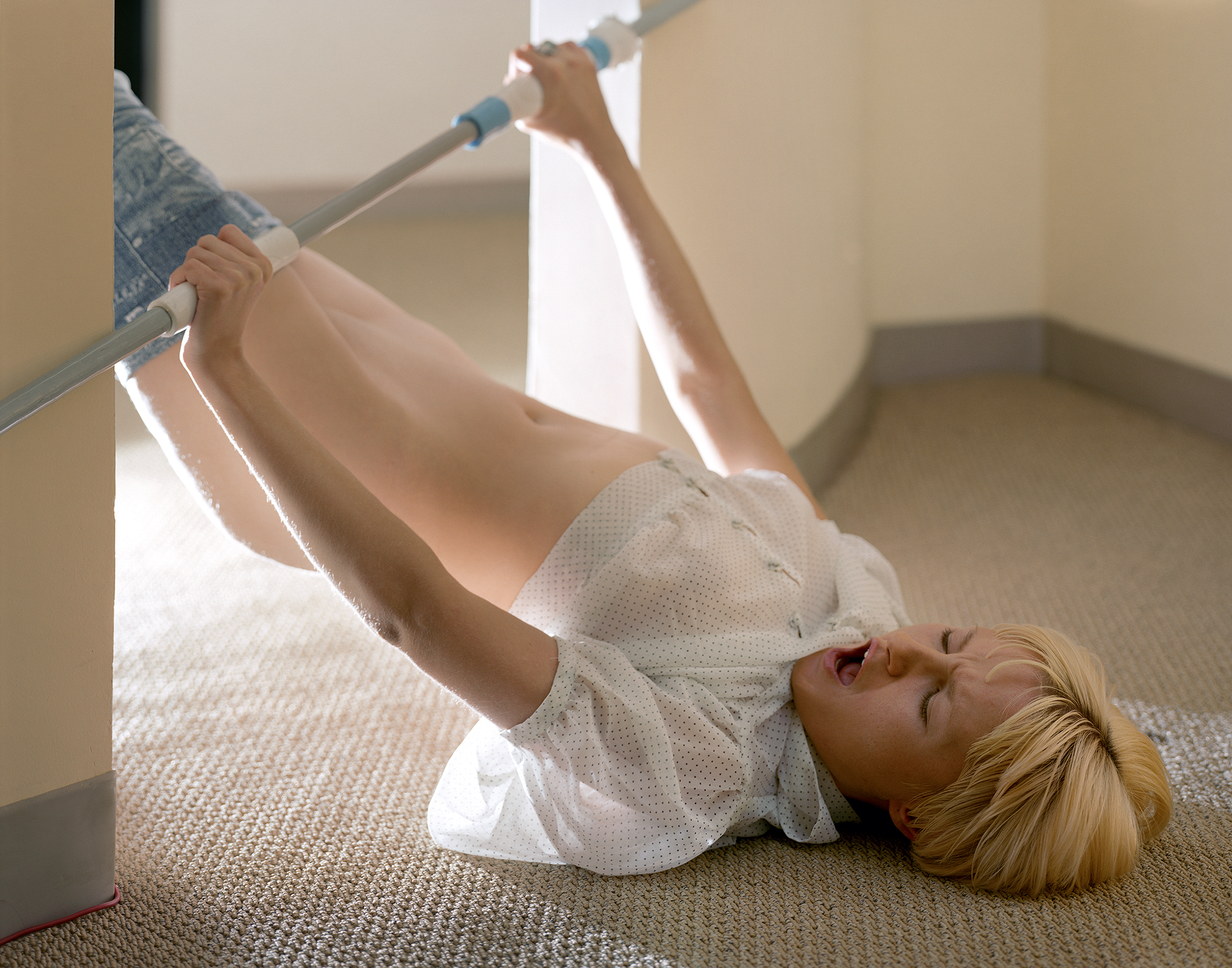Purple Magazine
— S/S 2017 issue 27
Torbjørn Rødland
interview by MAURIZIO CATTELAN
MAURIZIO CATTELAN — Is truth in photography relevant for you?
TORBJØRN RØDLAND — Every aspect of photography is relevant to me.
MAURIZIO CATTELAN — Are we living in some post-truth world?
TORBJØRN RØDLAND — It sure can seem like it, and I’m as fascinated by Vladislav Surkov [Russian businessman and politician] as the next guy, but everything will slowly turn sour if we stop looking for truths and just float.
MAURIZIO CATTELAN — Haven’t truth and facts themselves become irrelevant, compared with emotions?
TORBJØRN RØDLAND — Far from it. And it’s not an either/or. You can find truth in emotions, and feelings in facts. It’s our job to find ways out of the pluralistic funhouse, where truth was fragmented and lost among a million individual perspectives and voices. And the way out is through knowing yourself. The solution isn’t to retract to a single traditional voice — the constant call from the old tower — but to identify with the place within yourself that can sprout a multitude of perspectives. This is why art will turn spiritual after having focused on quotes, signs, and surfaces for a while.
 Peel no.4, 2014-2016
Peel no.4, 2014-2016
MAURIZIO CATTELAN — What does an image consist of?
TORBJØRN RØDLAND — Layers upon layers of perception and identification.
MAURIZIO CATTELAN — Is there a hidden pleasure behind a story whose ending you’ll never discover?
TORBJØRN RØDLAND — I think so, yes. For me, it’s not about fulfilling a narrative. It’s about how deeply the silliest single image can resonate. It’s about moving through bad art and cliché in order to arrive at an authentically complex experience.
MAURIZIO CATTELAN — What happens after memory is gone? Is photography a medium to avoid forgetting, or is it more a misleading way to remember?
TORBJØRN RØDLAND — Oh, it does both, in similar ways to how [Kathryn] Bigelow’s Zero Dark Thirty misleads and becomes the remembered reality of the 2011 Osama Bin Laden raid.
MAURIZIO CATTELAN — What exists beyond the human senses?
TORBJØRN RØDLAND — Unknown worlds.
 Floor flowers, 2015
Floor flowers, 2015
MAURIZIO CATTELAN — What would happen without light?
TORBJØRN RØDLAND — If there was time, more bodies would mutate and develop an ability to produce light biologically. That’s how important light is. The raw answer is, of course, accelerated entropy and mass death.
MAURIZIO CATTELAN — What is a revelation for you?
TORBJØRN RØDLAND — A model or sitter helping me visualize what I cannot verbalize, what I wouldn’t know how to ask for. An analog photograph turning out better than I thought possible. An immersive Trisha Donnelly installation. Mana Ashida in Pacific Rim. The slow unpacking of the Enneagram. Mutual infatuation. A brilliant mistake.
MAURIZIO CATTELAN — Is looking away the eighth deadly sin?
TORBJØRN RØDLAND — It’s not my job to take on all the world’s problems. My job is to not lose my way among them.
MAURIZIO CATTELAN — Will humanity experience cultural decline in the near future?
TORBJØRN RØDLAND — What can I say? There will always be corrections, corruptions, doubts, and dips — and the US may be entering one now — but I do actually believe in a steady upward trajectory toward more complexity and more empathy.
 Piggy Fail, 2015
Piggy Fail, 2015
MAURIZIO CATTELAN — What is doubt for you?
TORBJØRN RØDLAND — Doubt is linked to curiosity. It grows from a respect for unfamiliar perspectives.
MAURIZIO CATTELAN — How much symbolic interpretation is relevant for your work?
TORBJØRN RØDLAND — How much? Please feel free to max it out.
MAURIZIO CATTELAN — Did you ever think of taking up war photography?
TORBJØRN RØDLAND — Not seriously. I like the reintroduction of photojournalistic modes of communication to deepen experiences and images from the pluralistic funhouse, but pure, uncut reportage just isn’t doing it for me.
MAURIZIO CATTELAN — What is true happiness?
TORBJØRN RØDLAND — A constant higher state of awareness.
MAURIZIO CATTELAN — Where is the line between insanity and creativity?
TORBJØRN RØDLAND — I don’t know. Insane people are endlessly creative, but they typically don’t create great art. Great art is made by people who are also overly sensitive to the shortcomings of current and rising art stars.
 First abduction att empt , 2014-2016
First abduction att empt , 2014-2016
MAURIZIO CATTELAN — How much do other images influence your creative process?
TORBJØRN RØDLAND — I steal from other images but never from other artists. When I’ve remade what I stole, it doesn’t seem like theft anymore.
MAURIZIO CATTELAN — What’s so fascinating about kids?
TORBJØRN RØDLAND — Their awareness and experience of something old and familiar. Their awareness and experience of something new and unfamiliar.
MAURIZIO CATTELAN — Is BDSM a metaphor for the condition we’re living in every day?
TORBJØRN RØDLAND — It sure can be.
MAURIZIO CATTELAN — Are you the same person you were 10 years ago?
TORBJØRN RØDLAND — As in 2007? Definitely the same person.
MAURIZIO CATTELAN — What would you do if you woke up blind one day?
TORBJØRN RØDLAND — I would listen to music and cry. I would try to marry a smart and kind woman. She would help delete my Instagram and shop for an ocular prosthesis (if my natural lenses were busted). If my eyesight couldn’t be brought back, I would try to learn to read with my hands. I don’t think I would be a blind photographer. I would make drawings again. I would create a Google alert for self-driving cars. My computers would speak to me. I would listen to music and write.
 Torbjørn Rødland, midlife dilemma, 2015
Torbjørn Rødland, midlife dilemma, 2015






















































































































































